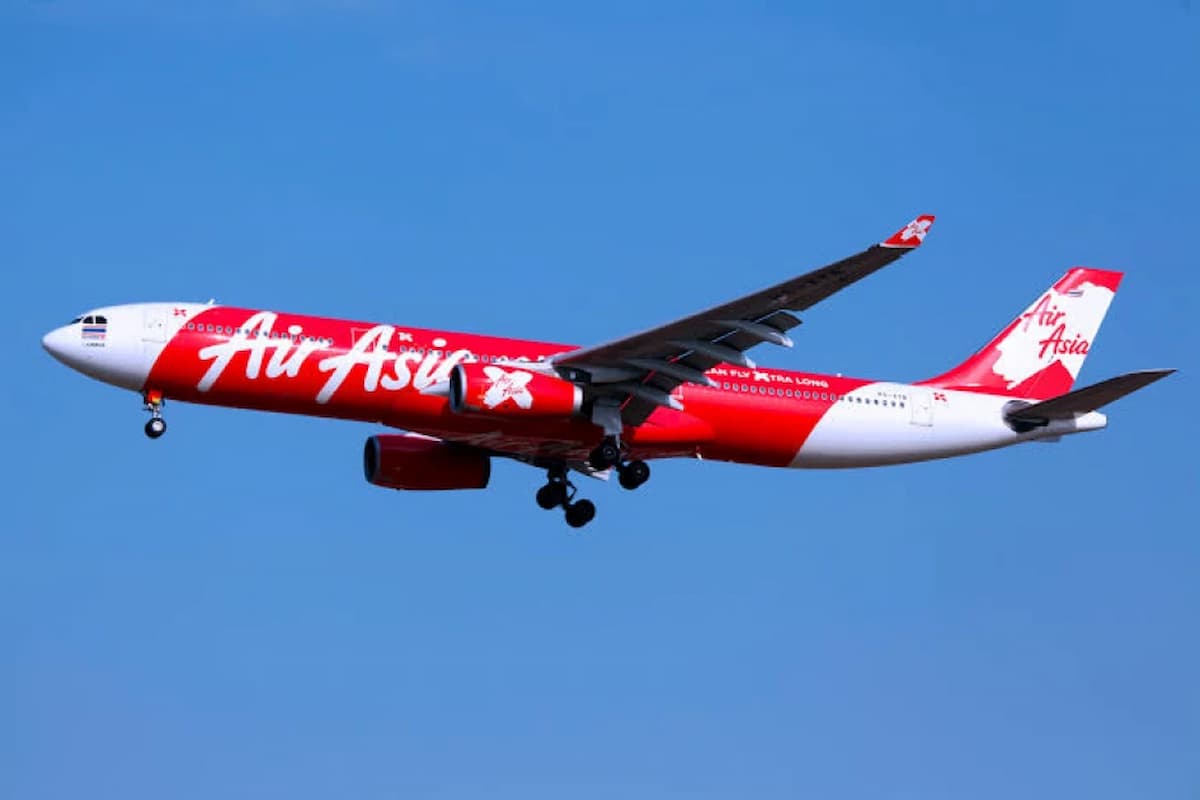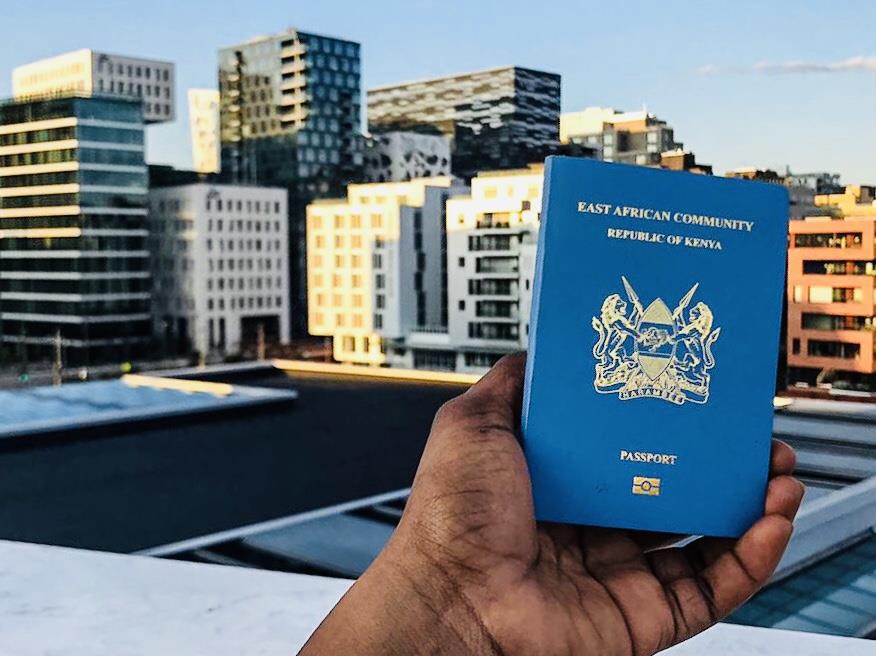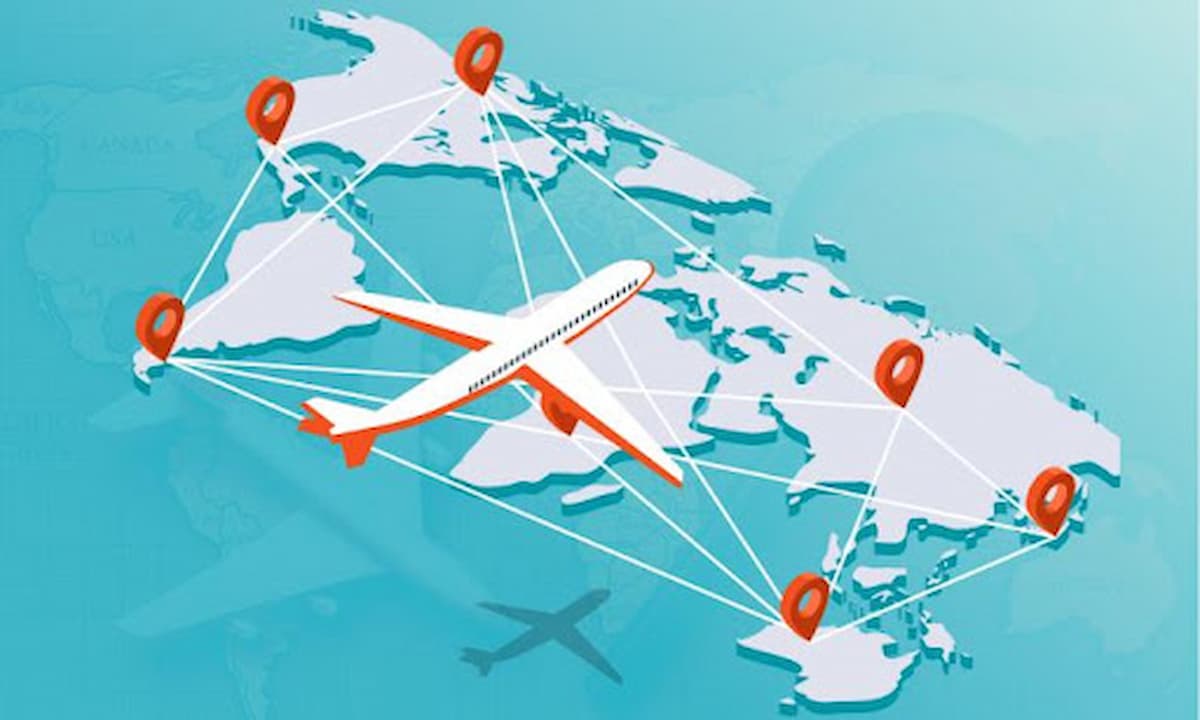Tourists on a Game Drive. Photo/Courtesy
Continue readingEthiopian Airlines unveils exclusive Silver Lounge at Bole Int’I Airport.
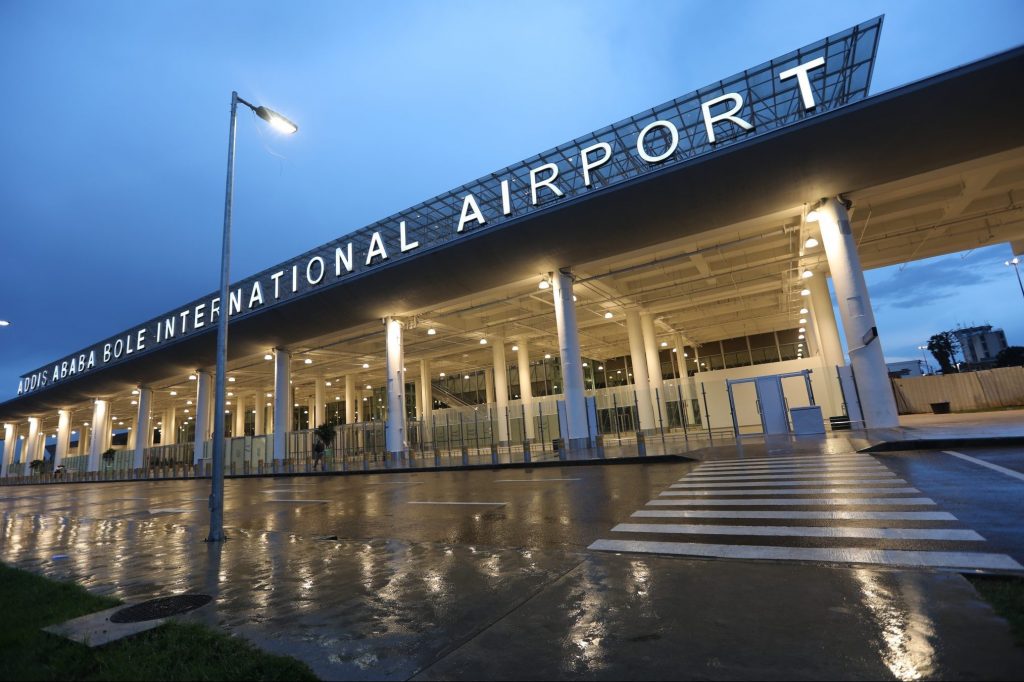
Ethiopian Airlines, the leading aviation group in Africa, is pleased to announce the inauguration of the Silver Lounge, an exclusive facility dedicated to ShebaMiles Silver members. Strategically positioned within the Addis Ababa Bole International Airport, the Silver Lounge offers a serene and engaging environment where passengers can unwind and enjoy entertainment amenities.
The Silver Lounge, spanning an impressive 810 square meters, is designed to offer a serene oasis for travelers. It features a variety of amenities tailored to meet the needs of diverse clientele, including dining areas with an array of buffets and services, comfortable seating areas for relaxation, a designated smoking room, a delightful kids’ corner for younger guests, ample storage room, and additional facilities to enhance the passenger experience. The lounge’s capacity allows it to accommodate up to 200 guests during peak hours, ensuring a seamless and stress-free travel experience.
“We are pleased to open the doors to this magnificent lounge, which symbolizes our continuous efforts to elevate the standards of hospitality in the skies and on the ground,” said Mr. Mesfin Tasew, Chief Executive Officer of Ethiopian Airlines Group. “The Silver Lounge is more than just a space; it is an embodiment of our vision to further enhance the travel experience of our guests and solidify Addis Ababa as a leading aviation hub in Africa.”
The Silver Lounge is a symbol of the airline’s relentless pursuit of excellence and its unwavering dedication to providing its guests with the highest levels of comfort, convenience, and luxury. The airline’s commitment to providing superior travel experience is further exemplified by the availability of multiple lounges throughout the airport terminals, catering to the diverse needs of its clientele. Passengers holding Cloud Nine, ShebaMiles Platinum, Star Alliance Gold, and Silver memberships have the privilege of accessing these lounges to rejuvenate during their transit through Addis Ababa.
Ethiopian Airlines, a seven-time consecutive recipient of the prestigious Skytrax award, remains steadfast in its dedication to elevating the passenger experience. As the most expansive carrier across the African continent, the airline continues to invest in customer service enhancements, ensuring that its esteemed passengers enjoy the highest standards of hospitality and comfort.
Source: Voyages Afriq.
Bosses cut flying day trips as travel settles into permanent ‘new normal’
Industry body says inflation-adjusted corporate travel spending will not return to pre-pandemic levels until 2027
Executives are flying less and cutting one-day work trips by plane as corporate travel settles into a permanent “new normal”, according to the chief executive of the global industry trade body.
“Inflationary pressures and other things means [travel companies] are making more money on fewer trips . . . but the way companies travel is different,” said Suzanne Neufang, head of the Global Business Travel Association. “So that is a new normal and that is probably here to stay.”
One of the big changes has been the decline of one-day flight trips, as bosses cut journeys because of frustration with disruption, environmental worries and changing attitudes to work since the pandemic.
The one-day flight trip for work “went out the door at the beginning of Covid and hasn’t really come back”, explained Neufang.
Inflation also means that executives are struggling to save money despite making fewer trips.
The GBTA does not expect spending on inflation-adjusted global corporate travel, which includes spending on flights, trains, hotels and other expenses, to return to pre-pandemic levels until 2027.
Without the inflation adjustment, the GBTA said global corporate travel would reach a record $1.48tn by the end of the year, up from $1.34tn in 2023 and surpassing pre-pandemic levels for the first time.
Delays and cancelled flights are partly responsible for fewer trips since the pandemic, with 50 per cent of respondents to a 2023 GBTA survey saying concerns about disruptions or an unpleasant experience have “somewhat” or “greatly” reduced their willingness to travel for work.
Environmental and sustainable factors have also played a part as corporates try to limit flying, packing more meetings into fewer trips or only taking a plane for long journeys.
Companies including professional service firms PwC, EY and Marsh McLennan have all outlined plans to cut emissions by reducing air travel.
In addition, there was a human element, Neufang added. “Day trips are really hard, no matter what, even on the best days they are hard, very early starts and late returns.”
The chief executive of one of the big international airlines said it was noticeable how day trips had fallen out of favour as bosses cut time in the air. The CEO pinpointed fear of disruption as a likely reason for the drop.
Neufang thought the industry was in “a little bit of a squishy moment” given the uncertain outlook for the economy, including recent stock market turmoil and signs of cracks in the US economy.
“Whether it is a hard landing or a soft landing, that is certainly something that CFOs [chief financial officers] are watching.”
However, Andrew Crawley, president of American Express Global Business Travel, was upbeat.
“Air fares and hotel rates have gone up very significantly in the past few years . . . customers’ budgets lag those price rises a little bit, but they do catch up with them eventually.”
Global multinationals were telling AmexGBT that they still planned to increase spending on travel, although small- and medium-sized businesses were more likely to suffer from economic uncertainty, Crawley said.
He also disagreed that travel problems would put people off taking trips. “You either have to travel or you don’t.”
Source: Financial times
Africa Tourism Leadership Forum 2024 set to chart a new path for intra-Africa travel, tourism & investments.
The Africa Tourism Leadership Forum (ATLF) 2024 is scheduled to take place from September 3rd to 6th at the Gaborone International Conference Centre, Grand Palm, in Gaborone, Botswana.
This year’s theme, “Charting a New Path Forward for Intra-Africa Travel, Tourism & Investments,” reflects the forum’s commitment to fostering sustainable growth and collaboration across Africa’s travel, tourism, and investment sectors.
ATLF is a premier Pan-African dialogue platform that brings together influential stakeholders from the travel, tourism, hospitality, and aviation sectors. The forum serves as a unique opportunity for industry leaders to network, share insights, and develop strategies to boost intra-Africa travel and tourism, thereby enhancing the brand equity of “Destination Africa.”
The 2024 edition of ATLF will focus on three thematic areas: Sustainable & Inclusive Tourism, Boosting Intra-Africa Travel, and Driving Economic Growth. These themes are designed to ensure that tourism development benefits all stakeholders, especially local communities, and contributes to the continent’s economic integration and growth.
The ATLF Awards, a highlight of the forum, will recognize and celebrate innovation, excellence, and transformative initiatives pioneered by Africans, for Africans, in Africa. Attendees will have access to investment opportunities, innovation showcases, and educational sessions led by industry experts.
As Kwakye Donkor, CEO, aptly puts it, “The future of African tourism lies in our ability to chart a new path forward, one that prioritizes sustainability, inclusivity, and collaboration. ATLF 2024 is poised to be a transformative dialogue that will shape the future of African travel, tourism, and investments.”
Building on the success of ATLF 2023, which saw over 500 participants, including thought-leaders, media, travel trade, industry practitioners, hoteliers, policymakers, and renowned experts, ATLF 2024 promises to be an even more impactful event.
The forum will feature insightful discussions, networking opportunities, and practical sessions on topics such as:
– Sustainable & Inclusive Tourism
– Boosting Intra-Africa Travel
– Driving Economic Growth
– Investment opportunities in tourism and hospitality
– Educational sessions led by industry experts
Join us at ATLF 2024 to be part of a movement that will drive sustainable growth and collaboration across Africa’s travel, tourism, and investment sectors.
Source: Voyages Afriq.
Ethiopian Airlines Elevates Passenger Experience with TSA PreCheck® Enrolment
Press Release – Ethiopian Airlines Elevates Passenger Experience with TSA PreCheck® Enrolment-The program offers passengers premium services to experience smoother security screening without removing shoes, laptops, liquids, belts, and light jackets.
Ethiopian Airlines Group, the largest aviation group in Africa is delighted to announce its partnership with the United States (US) Transport Security Administration (TSA) PreCheck® program.
The program allows Ethiopian Airlines’ customers traveling out of USA to have a better air travel experience with a more seamless, secure, and comfortable security screening solution as they can keep their shoes, belts and light jackets on, and their laptops and 3-1-1 liquids in their bags while passing through the dedicated TSA PreCheck screening lanes.
The 3-1-1 liquids rule is a TSA regulation that allows passengers to carry liquids, gels, and aerosols in travel-size containers that are 3.4 ounces or 100 milliliters each. All such containers should be placed in a single, quart-sized bag, with one bag permitted per passenger. This rule streamlines the security process and ensures a quicker passage through airport checkpoints.
Regarding the partnership Ethiopian Airlines Group CEO Mesfin Tasew said, “This collaboration marks a significant milestone in our 25-year history of service to and from the United States, enhancing the travel experience for our esteemed passengers through expedited security screening.” He added, “Our integration into the TSA PreCheck® program is more than just an added convenience; it is a reflection of our dedication to providing a superior travel experience.”
Through TSA PreCheck, customers can enjoy streamlined security processes and expedited security screening. This will help our passengers to have more control over how they comfortably spend their time and benefit from a secure air travel system. TSA PreCheck® passengers wait less than 10 minutes in dedicated lanes at airport checkpoints nationwide.
Ethiopian Airlines now offers this expedited service to its customers traveling from five key destinations in the USA: Atlanta, Chicago, Newark, New York, and Washington. Our valued customers who are U.S. citizens, U.S. Nationals or lawful permanent residents of the United States, may benefit from enrolling in the TSA PreCheck Application Program through one of TSA’s three authorized enrollment providers.
For more information, please visit the following websites: https://corporate.ethiopianairlines.com/Press-release-open-page/ethiopian-airlines-elevates-passenger-experience-with-tsa-precheck-enrolment
https://www.ethiopianairlines.com/aa/tsa-prechek
About Ethiopian
Ethiopian Airlines Group (Ethiopian) is one of the fastest-growing airlines brand globally and the continent’s largest airline brand. In its seventy-eight years of successful operations, Ethiopian has become the continent’s leading carrier, unrivalled in efficiency and operational success. Ethiopian commands the lion’s share of the African passenger and cargo network operating the youngest and most modern fleet to more than 150 domestic and international passenger and cargo destinations across five continents. Ethiopian’s fleet category consists of ultra-modern and environmentally friendly aircraft such as Boeing 737s, 777s, 787s, Airbus A350-900 and Bombardier Dash 8-400 double cabin.
Ethiopian is also pursuing multi-hub strategy through hubs in Lomé, Togo with ASKY, in Lilongwe, Malawi with Malawi Airlines and in Lusaka, Zambia with Zambia Airways. Having achieved its strategic plan (Vision 2025) ahead of time, Ethiopian is currently implementing a 15-year strategic plan Vision 2035 that will see it become one of the top 20 most competitive and leading aviation groups in the world.
Ethiopian has been champion in various coveted awards including Skytrax’s ‘Best Airline in Africa Award’ for seven consecutive years among others. The airline has been a Star Alliance member since 2011 and has been registering more than threefold growth in the past 10 years.
For more at: www.ethiopianairlines.com
Contacts
Nairobi City Office
Bruce House Muindi Mbingu Street
nbores@ethiopianairlines.com
nbocto@ethiopianairlines.com
Tel
+254 701223493/+254 701223970/+254 723786649
24 hours Toll free: +254 20 3892349
AirAsia Takes Flight in Kenya- What Does This Mean for You?
We are delighted to inform you that the Kenyan Ministry of Transport has granted AirAsia full approval for scheduled flights between Kuala Lumpur and Nairobi. This official clearance allows you to confidently sell tickets to your customers without any concerns. The arrival of AirAsia in Kenya marks a new era of affordable air travel. With its vast network and competitive fares, this low-cost carrier is set to revolutionize the way Kenyans travel.
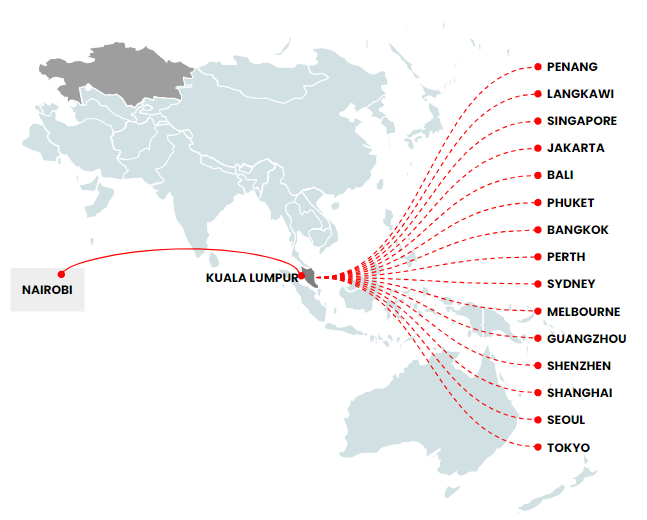
Discover More Destinations
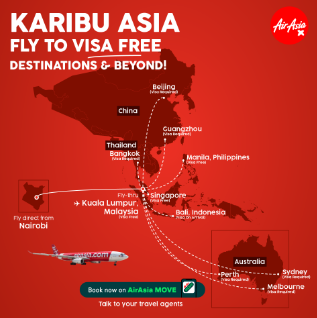
One of the most exciting benefits is the opportunity to explore new destinations. AirAsia’s extensive network provides access to 35 new destinations across 12 countries, allowing you to cater to a wider range of traveler preferences. Whether your clients dream of the vibrant cities of Southeast Asia, the stunning beaches of Australia, the cultural richness of HongKong, or the business acumen of Singapore AirAsia can take them there.
Reduced Fares and Travel Hours
AirAsia has maintained its position as the world’s leading low-cost airline for an unprecedented 15 consecutive years, winning the prestigious Skytrax World Airline Award in June 2024. Beyond its financial success, AirAsia has been a pioneer in environmental sustainability and affordable travel. Connect your customers to Australia for up to 40% less than traditional flights while enjoying flight times that are over 30% shorter!
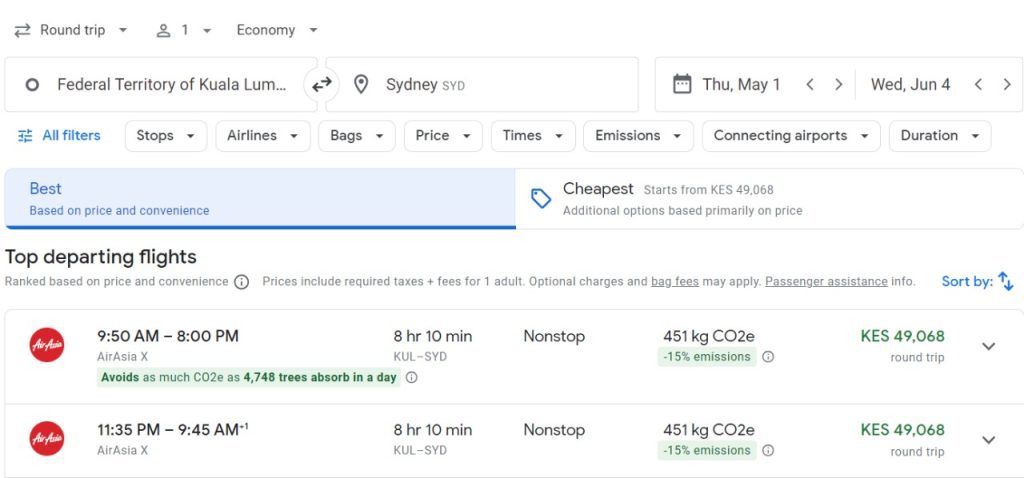
All cabin classes
Direct flights to Kuala Lumpur and beyond will be operated by an Airbus A330. Defying expectations, this low-cost carrier offers a premium experience, including all cabin classes typically found on full-service airlines, even flatbed seats. The aircraft configuration is detailed below:

What Next?
1. Do you wish to sell East and Southeast Asia destinations? Register on their booking system by clicking here if you’ve not already
2. Join the exclusive AirAsia System and destinations training for our member travel agents on Friday the 9th of August.
Africa’s action plan for adventure travel.
Adventure tourism has been a growing niche in the travel industry, with the global market valued at over $450 billion and projected to reach $2.6 trillion by 2033, according to a recent report by Allied Market Research. And although, as Wild Expeditions’ Chris Roche points out, people usually equate adventure travel with kayaking in a North American river or hiking to Machu Picchu, Africa is starting to position itself as a new and different type of adventure tourism destination.
“Adventure is in the eye of the beholder,” said Peter Allison, sales and marketing manager at Natural Selection. He explains that for many people merely touching ground on the African continent is a pulse-raiser. But he adds that Africa is no longer a “one-trick pony” promoting only wildlife experiences.
Kenya is embracing this shift wholeheartedly. The Kenya Tourism Board has established a National Adventure Tourism Products Club, bringing together public- and private-sector stakeholders to package and promote new adventure offerings. June Chepkemei, CEO of the tourism board, said the resilience and growth potential of adventure travel is key in supporting local economies.
In a recent webinar organized by the Africa Travel and Tourism Association, James Savage of Savage Wilderness said Kenya’s diverse adventure portfolio now includes things like paddleboarding with dolphins, camel safaris and even heli-biking on Mount Kenya. The country is also gaining traction as a destination for professional mountain bike racing, with events like the Safari Gravel Race in Naivasha’s Hell’s Gate National Park drawing international competitors.
Meanwhile, South Africa’s Western Cape is also making its mark in the adventure space. According to South African Tourism, the province attracted 85% of all adventure tourists visiting the country in 2023. Wesgro, the region’s official tourism, trade and investment promotion agency, commented that the Western Cape is “ideally positioned in the adventure tourism market due to its growing emphasis on sustainability and the promotion of harmony between humans and nature.”
Low-impact thrills
Although the continent has long featured adventure activities such as bungee jumping and whitewater rafting in places like Victoria Falls, Africa is also developing activities “for those seeking a thrill but with fewer bruises,” according to Allison. He mentions activities like exploring the ancient dunes of the Skeleton Coast from Shipwreck Lodge in Namibia, snorkeling under a waterfall at the GweGwe Beach Lodge in South Africa and learning how to make fire with sticks, zebra dung and sand from the bushmen in places like Botswana, Namibia and Zimbabwe.
Roche agrees, saying there has been a shift from pure adrenaline activities to “soft adventure.” This includes experiences like tracking lions on foot, sleeping out on an island in the Okavango Delta or spending a day immersed in local rural culture. “Travelers want to be able to immerse themselves in local culture and really understand what it’s like to be a rural person in Africa, living with the wildlife and the challenges that brings. We also see an increased demand in destinations like Madagascar and Ethiopia, which offer less typical safari adventures that are far more physically active, more remote, less scripted and just entirely different,” he said.
Spreading the tourism wealth
This reimagining of adventure tourism is having a positive impact on rural communities across Africa.
“The rise of adventure tourism across Southern Africa represents a significant opportunity for sustainable economic growth and regional cooperation,” said Natalia Rosa, project lead with the SADC Business Council Tourism Alliance. “By diversifying our tourism offerings beyond traditional safaris, we’re not only attracting a new segment of travelers but also spreading the benefits of tourism to more communities across the SADC region. This shift towards adventure and experiential travel aligns perfectly with our goals of promoting responsible tourism and fostering deeper connections between visitors and our diverse cultures and landscapes.”
Allison said revenue from adventure tourism has enabled Natural Selection to undertake programs that help community development and conservation efforts, programs like the Ele Express in northern Botswana. In a joint effort with local organizations, Natural Selection was able to purchase minibuses to deliver children safely to school, easing the real risk of kids being trampled by elephants on their walk. It is a program that has since been expanded to help transport the elderly as well as pregnant women.
“The impact is not just job creation, it is locals also understanding the importance of tourism and why it has to be protected,” said Nomkhosi Tshabalala, marketing manager for the Kruger Lowveld tourism group in South Africa.
Adventure tourism is “low-hanging fruit” for communities, said Johan Radcliffe of Dirty Boots, a South African tour company. “There are many rural areas that are offering walking tours, kayaking trips and many more such activities. These operations are low in capital set-up fees, and rural areas are the perfect location for activities such as these.”
For Roche, it’s the right time for Africa to focus on diversifying safari product beyond its core construct (game drives with a guide). Why? “Because it provides a mitigation to overtourism in a couple of key locations. Because it will ensure the positive impacts of tourism are felt farther afield and have good outcomes for less well-known ecosystems and species. And because a one-dimensional approach is limited and has an inherent risk to market change,” he said.
Tips for travel advisors
For travel agents looking to tap into this evolving market, adventure specialists in Africa have the following advice:
1. Prioritize safety: Look for operators with a proven safety record, comprehensive insurance and a transparent approach to safety discussions. “Are they proud of their safety record? Are they happy to discuss their measures with you? No cavalier operator will be in business more than a few years,” Natural Selection’s Allison said.
2. Download the right apps: Jessi Sunkel, executive director of the South African Adventure Industry Association, said travel consultants should advise clients to download the Secura Traveller app which offers immediate help wherever they are in South Africa.
3. Verify credentials: Ensure guides have proper certifications and operators have necessary licenses and accreditations and ask for proof, said Sunkel. A great resource is 101 Adventures. This is a list of companies that are complying with high standard regulations created by industry experts. Radcliffe of Dirty Boots emphasizes the importance of checking for proper certifications and insurance. He also recommends agents familiarize themselves with the various adventure tourism associations and governing bodies in each country.
4. Check digital presence: Research an operator’s online presence and reviews for insights into their reputation and safety record, said Kruger Lowveld’s Tshabalala.
5. Stay informed: Use resources like government travel advisories, local news and official tourism websites for the latest information. “An easy start is your government travel advisory, but the problem with those is they throw a blanket over whole nations — saying don’t go to Namibia because there might be yellow fever in neighboring Zambia is akin to blacklisting Alaska because of violence in Mexico,” Allison said. “If you make the effort, local news coverage is a good source – if it’s not panicked you probably don’t need to be either.”
Source: Travel Weekly.
Immigration Services announces changes in passport collection.
The Directorate of Immigration Services has announced the simplification of the passport collection process.
In a statement on Sunday, the Department said that applicants no longer need to book appointments to pick up their passports.
“Further, we have simplified the process of passport delivery: applicants are no longer required to book for appointment to collect passports,” The Directorate said in a statement on X.
Applicants will now receive a message from the Immigration Department, confirming that their application has been processed and passport printed.
Thereafter applicants will proceed to the collection desk, at the respective places where they applied and pick up their documents.
They added that the changes come in response to public feedback and are part of the Directorate’s commitment to enhancing efficiency and accessibility.
“The Directorate of Immigration Services is listening and open to all emerging issues.”
The Directorate encouraged the public to reach out to them in case of any concerns or suggestions.
Source: KBC.
How new routes to global hubs can elevate aviation.
A new study by European aircraft manufacturer Airbus indicates that West Africa holds the potential for an aviation revolution, leveraging its booming population, diverse economies and strategic geographical position to open new routes.
The study, ‘Exploring the horizons: A study of unserved air routes to, from and within Africa,’ highlights that nine out of the top 15 unserved routes start or end in West Africa.
These routes represent significant opportunities for airlines in the region. They include Lagos-New York, Abuja-Nairobi and Dakar-Libreville.
“It is surprising to observe that throughout the entirety of 2023 and up to the conclusion of the IATA-summer in 2024, merely two routes connected Nigeria with North America,” the Airbus study says.
“And both routes were operated by non-Nigerian operators: Lagos-Atlanta, operated by Delta Air Lines, and Lagos-Washington, operated by United Airlines.
“What is particularly remarkable is that during the same period, the whole region of West Africa only had three entry-points in North America: Atlanta, New York and Washington.”
Beyond West Africa, other cities across the continent considered “most appealing unserved routes” link cities such as Cape Town, Nairobi, Dakar and Douala.
At the top of the list of unserved routes in Africa are long-haul intercontinental flights connecting the continent to North America, Europe and the Indian subcontinent.
These routes highlight crucial gaps in air travel, driven by high demand for direct flights from major African cities to global hubs. Currently, passengers endure time-consuming connecting flights, adding unnecessary inconvenience to their journeys.
This is even as projections by the African Airlines Association show African airlines are likely to cross the 100 million passengers mark for the first time in 2025, a sign of the growing traffic volumes in the country’s aviation sector.
Afraa says passenger numbers will hit 98 million by the close of year, which is a 15 per cent increase from 2023, before hitting beyond the 100 million mark by 2025.
Airbus projects a 4.1 per cent annual growth in air traffic over the next 20 years, leading to a demand for 1,180 new aircraft in Africa by 2043.
Despite challenges, the study highlights the potential for greater air travel efficiency through improved connectivity and optimised flight paths, promising reduced travel times and costs.
Notable progress is already underway, with several airlines expanding to cover new routes within Africa and beyond. Ethiopian Airlines is leading the charge, aiming for a 30 per cent growth in passenger numbers by mid-2024.
More foreign airlines are also increasingly expanding into new African routes. For instance, AirAsia, a leading Asian carrier, has announced a direct route to Kuala Lumpur, Malaysia, starting in November.
This new intercontinental route eliminates the need for long layovers, offering travellers an effortless journey between East Africa and Asia.
The ongoing expansions are yielding results, with IATA projecting Africa’s airlines to earn a collective net profit in 2024 for the second consecutive year, showcasing the sector’s impressive post-pandemic resilience.
The Airbus report suggests creating direct long-haul routes between several other key destinations. These include routes from Harare to London, Johannesburg to Mumbai, Entebbe to London, Cape Town to Brussels, Durban to London, and Nairobi to Washington.
The report also proposes flights from Lagos to multiple North American cities, such as Manchester, New York, Toronto and Houston.
While the authors acknowledge that unserved city pairs within the continent rank relatively lower in terms of economic feasibility due to lower traffic numbers, there are promising prospects, such as between the Cape Town-Lagos route.
“Given the pivotal roles played by both Lagos (Nigeria) and Cape Town (South Africa) within their respective countries and across the African continent, the establishment of a non-stop service between these cities emerges as a sensible case,” the authors say.
“Despite the significance of both cities, there is currently no non-stop flight between them. Historical schedule data indicate that such a service has never existed. Moreover, there is no direct air service connecting Cape Town with the entire subregion of West Africa.”
Other high-potential intra-continental routes that the report identifies include Dakar-Libreville, Abidjan-Douala, Abuja-Nairobi and Dakar-Douala.
However, according to experts, efforts to ensure visa-free travel for Africans will create a real impact in easing travel, especially at the regional level.
New South Institute research fellow Alan Hirsch said by the end of 2022, only 27 per cent of African routes allowed visa-free travel for Africans.
“Regularising freer movement of people across African borders is one of the continent’s great developmental challenges. It is one of the flagship projects of the African Union’s Agenda 2063,” he said.
Hirsch is also an emeritus professor at the Nelson Mandela School of Public Governance at the University of Cape Town.
Source: The Star.
More tourists visiting Kenya but spending less.
In Summary
•The strong arrivals has been pegged on the visa openness which came with the introduction of the Electronic Tourist Authorization (eTA) at the beginning of the year.
•This, TRI acting chief executive David Gitonga yesterday said, has eased the visa application process, making it seamless for tourists.

Image: ALPHONCE GAR
Recovery in global tourism industry coupled with a strong marketing campaign saw Kenya record a 21.2 per cent jump in international arrivals in the year to June.
Foreign visitors in the half-year period totaled 1,027, 630, data by the Tourism Research Institute (TRI) shows, compared to the 847, 719 in the same period in 2023.
Even so, tourism sector earnings during the period dropped 7.1 per cent to Sh142.5 billion, compared to Sh153.4 billion recorded last year.
This reflects reduced spending by tourists in the wake of inflation which wiped out gains that came with the higher visitor numbers.
The strong arrivals has however been pegged on the visa openness following the introduction of the Electronic Tourist Authorization (eTA) at the beginning of the year.
This, TRI acting chief executive David Gitonga said has eased the visa application process, making it seamless.
“In addition, improvements in air connectivity through introduction of new routes and more frequencies by major airlines has led to growth,” Gitonga said.
June registered the highest number of visitors (192,343) or 19 per cent of the total arrivals . January and February also registered notable figures each at 18 per cent of the total visitors, or 181,527 and 183,645, respectively.
These numbers have surpassed pre-covid levels by 11 per cent where arrivals were 925,927 in January to June 2019.
The US continued to dominate as Kenya’s top international tourists source with 134,901 Americans visiting Kenya.
It was followed by Uganda (103,680), Tanzania (91,889), the UK (70,593), with India closing the top five list with 50,510 visitors to Kenya.
Holiday or leisure was the main purpose of visiting accounting for 44 per cent (454,639) of the total arrivals.
Those visiting friends and relatives totaled 246,437 (24%), while those that were in the country for business and Meetings, Incentives, Conferences and Exhibitions (MICE) totaled 247,684, which was 24 of the total arrivals.
A total of 48,121 were on transit, education (11,761), religion (7,355), medical (5,344) seeking employment (3,932), while 2,357 visited Kenya for sports.
The Jomo Kenyatta International Airport (JKIA) was the main entry point, registering 693,046 arrivals, followed by Moi International Airport (Mombasa) with 87,041 arrivals.
Other entry points with significant numbers were Busia (81,067), Namanga (60,46) and Malaba (22,851).
The half-year performance puts the country on course of hitting its 2024 target of surpassing the two-million mark.
“We are projecting to hit 2.45million this year. The second half of the year yields more due to peak season of wildebeest migration July to September and high season of November, December,” Gitonga told the Star.
Earnings are expected to hit Sh359.1 billion this year and then Sh396.1 billion next year.
Last year, total arrivals were 2,086,600, the Economic Survey 2024 indicates, with earnings of Sh353 billion.





